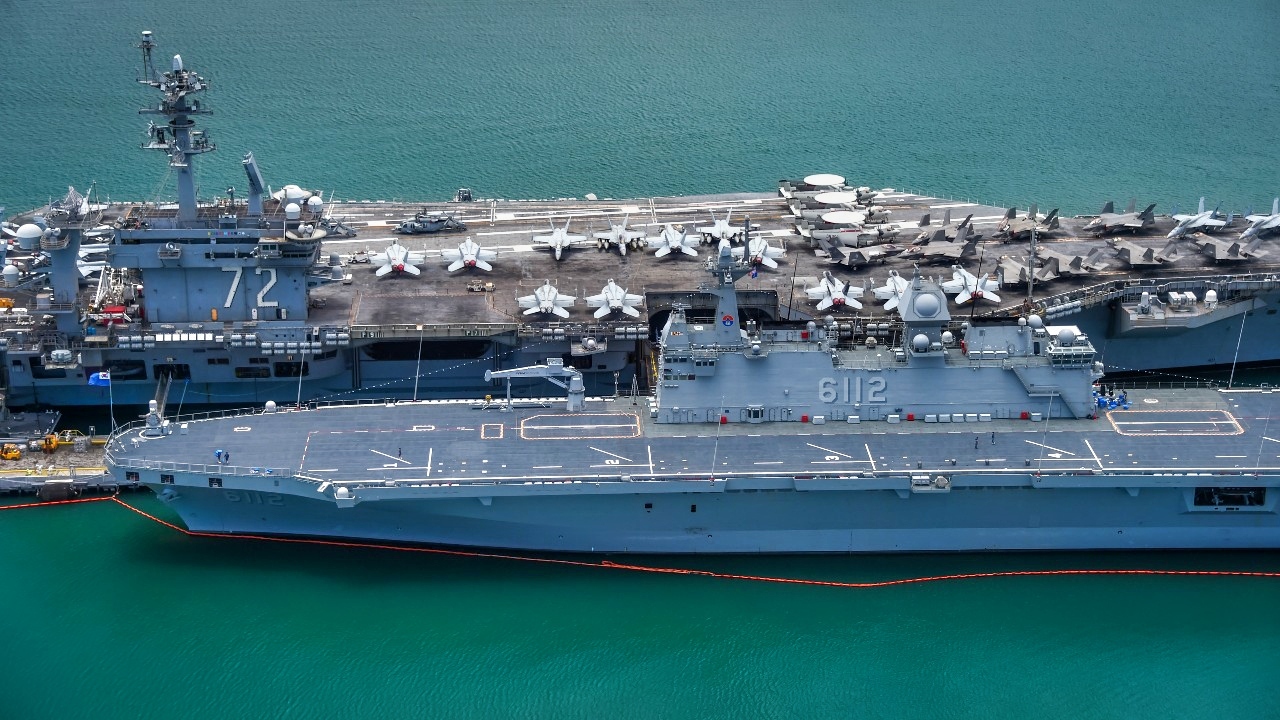US Navy Risks Aircraft Carrier Losses as Shipbuilding Faces Critical Crisis
The United States Navy is on the brink of a significant crisis, with the potential loss of its aircraft carriers looming due to an alarming stagnation in shipbuilding capabilities. As the Navy grapples with an aging fleet, the construction of new vessels is falling behind, prompting experts to raise concerns about national security and maritime readiness. The current pace of aircraft carrier production, estimated at a staggering 10 to 15 years per ship, raises questions about the Navy"s ability to maintain a robust maritime presence in an increasingly volatile global landscape.
Background & Context
In recent years, the U.S. Navy has witnessed a decline in its shipbuilding capacity amid rising geopolitical tensions. The current fleet, primarily composed of aging aircraft carriers, is in dire need of repairs and upgrades. Sal, a naval expert, highlighted that the Navy is resorting to cannibalizing existing carriers for spare parts to keep operational vessels afloat. This alarming trend raises questions about the sustainability of the Navy"s operations, particularly as current carriers age and require extensive maintenance.
Moreover, the Navy"s plans to enhance its destroyer fleet have faltered, with key vessels equipped with Vertical Launching System (VLS) cells being scrapped in favor of budgetary constraints. The situation is exacerbated by the deteriorating condition of amphibious ships, which are critical for maritime operations. The lack of adequate facilities for repairs and firefighting equipment further compounds the crisis, leaving the Navy ill-prepared to handle accidents or emergencies at sea.
Key Developments
As the shipbuilding crisis deepens, experts like Sal have pointed out that the United States may be forced to reflag ships from its Asian allies to compensate for its dwindling naval fleet. This move, while potentially expedient, raises concerns about the operational capabilities and readiness of these civilian vessels. John Konrad, a maritime analyst, has echoed this sentiment, emphasizing the reliance on foreign vessels to meet national security needs.
The current state of U.S. shipbuilding is characterized by a lack of leadership and direction. With no clear understanding of how funding will be allocated, initiatives such as the icebreaker construction program appear to be stalled indefinitely. This leadership vacuum has left key stakeholders in the industry uncertain about the future of U.S. maritime capabilities, posing a significant risk to national defense.
\n\n
Image for US Navy Risks Aircraft Carrier Losses as Shipbuilding Faces Critical Crisis
Broader Impact
The implications of the shipbuilding crisis extend beyond the Navy itself, potentially affecting the broader maritime industry and national security. As the U.S. military confronts aging assets and insufficient replacements, its ability to project power and respond to global conflicts may be severely compromised. This situation mirrors historical precedents where underinvestment in military infrastructure led to vulnerabilities at critical junctures.
Experts warn that the current trajectory could result in a diminished naval presence in critical regions, allowing adversaries to exploit gaps in U.S. maritime capabilities. The aging fleet, combined with the slow pace of new construction, may hinder the Navy"s ability to deter aggression and respond effectively to emerging threats. This precarious situation underscores the urgent need for a comprehensive strategy to revitalize U.S. shipbuilding and restore maritime dominance.
What"s Next
Moving forward, the U.S. Navy must prioritize revitalizing its shipbuilding initiatives to address the pressing challenges it faces. Key decisions regarding funding allocation and program management will be crucial in determining the future of the fleet. As the Navy navigates through this tumultuous period, stakeholders across the defense sector will be closely monitoring developments to ensure that U.S. maritime interests are safeguarded.
With potential conflicts on the horizon, the urgency to bolster naval capabilities has never been greater. The ramifications of failing to act could be profound, not only for the Navy but also for national security as a whole. As previously reported, the ongoing geopolitical landscape necessitates a proactive approach to maritime readiness, ensuring that the U.S. maintains its strategic advantage on the world"s oceans.

Image for US Navy Risks Aircraft Carrier Losses as Shipbuilding Faces Critical Crisis








